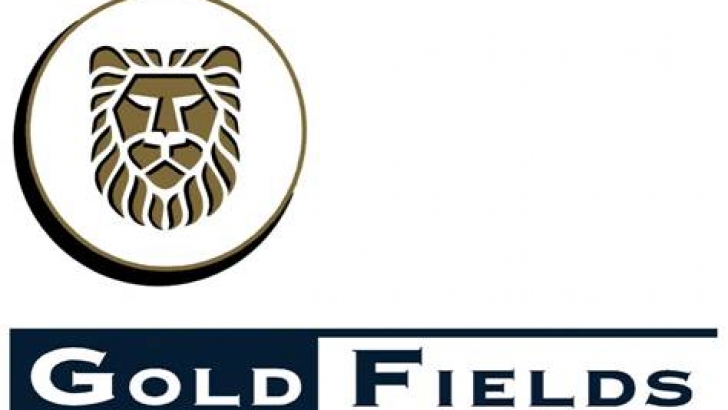
Gold Fields has said its attributable gold production in Ghana decreased by 3% quarter-on-quarter to 174koz, driven by lower production at both Tarkwa and Damang.
However, it said AIC was 4% lower quarter-on-quarter at US$925/oz.
“Unfortunately, Tarkwa had a difficult end to the year following a fatality at the mine in early December.
“Tarkwa managed to continue its good cost performance and reported an 8% quarter-on-quarter decrease in AIC to US$799/oz and generated net cash flow of US$14 million.
“Damang had another challenging quarter with production and costs deteriorating quarter on quarter. As reported with the Q3 2015 results, we continue to evaluate various options for Damang. We expect to complete this work before the middle of the year,” the miner said in its December 2015 quarter report.
The report, released on Thursday February 18 announced normalised earnings of US$15 million for the December 2015 quarter compared with US$22 million for the September 2015 quarter and US$17 million for the December 2014 quarter.
It recorded net losses attributable to its shareholders of US$258 million for the December 2015 quarter compared with net earnings of US$18 million for the September 2015 quarter and net losses of US$26 million for the December 2014 quarter.
A final dividend of 21 SA cents per share (gross) is payable on 14 March 2016, giving a total dividend for the year ended December 2015 of 25 SA cents per share (gross).
Chief Executive Officer of Gold Fields, Nick Holland, is quoted in a statement released by the miner as saying: “2015 was another challenging year for the gold industry, with the US$ gold price peaking at around US$1,300/oz in January and then falling approximately US$250/oz through the course of the year, with much volatility, to close 2015 at the US$1,050/oz level.”
“For Gold Fields, however, weakening commodity currencies provided some offset to the weaker US$ gold price. Combined with ongoing cost saving initiatives and efficiency improvements, the Group generated net cash flow of US$123 million for the year.
“This performance, driven by our strong international portfolio, has enabled Gold Fields to meet its commitments of paying dividends and improving the balance sheet. At South Deep, good progress has been made on getting the basics right, with early encouraging indicators emerging in H2 2015,” Mr Holland said.
Q4 2015 highlights
Q4 2015 attributable equivalent gold production was 566koz (up 2% quarter on quarter), with all-in sustaining costs (AISC) and all-in costs (AIC) down 2% quarter on quarter to US$929/oz and US$942/oz, respectively.
Production from South Deep was 24% higher quarter on quarter at 2,119kg (68koz), on the back of a 42% quarter on quarter increase in Q3 2015.
Despite a further reduction in the average gold price during the quarter to US$1,092/oz, the operations generated net cash flow of US$47 million.
Impairments of US$300 million were recognised in Q4 2015, which includes US$50 million of mine impairments (mainly related to the current outlook for Darlot and Damang); US$145 million of investment impairments; and US$105 million of deferred tax assets derecognised.
Normalised earnings for the quarter were US$15 million or 2 cents per share. In-line with Gold Fields’ dividend policy, it has declared a final dividend of 21 per share, taking the full year dividend to 25 cents per share.
During Q4 2015, there was a further reduction in the net debt balance to US$1,380 million (30 September 2015: US$1,427 million), which resulted in an improvement in the net debt to EBITDA ratio to 1.38x, from 1.41x at the end of Q3 2015.
For FY15, attributable equivalent gold production for the group was 2.16Moz (FY14: 2.22Moz), within 1% of the original guidance provided in February 2015. AISC and AIC came in below 2014 and better than both the original (February 2015) and revised (November 2015) guidance at US$1,007/oz (FY14: US$1,053/oz) and US$1,026/oz (FY14: US$1,087/oz), respectively.
The gold price steadily decreased through 2015, to average the year at US$1,140/oz (FY14: US$1,249/oz). Notwithstanding the approximate US$100/oz decrease in the average gold price, the Group managed to achieve a reduction of US$73 million in the net debt balance.
Strong end to the year at South Deep
South Deep had another improved quarter, with gold production up 24% quarter on quarter to 2,119kg (68koz) (almost double Q1 2015 production), driven by an increase in tonnes (+20% quarter on quarter) and head grade from underground sources (+4% quarter on quarter). Consequently, AIC fell 19% quarter on quarter to US$1,156/oz. Q1 2016 is expected to be lower quarter on quarter due to the Christmas holidays, however, it is expected to be better than Q1 2015 as a result of the back to basics approach adopted during the past year.
There was further progress made on a number of important activities at the mine in Q4 2015:
• Safety continues to be a priority, with no fatalities in the quarter or in H2 2015 and the TRIFR 40% lower quarter on quarter at 2.12.
• Assisted by the higher rand gold price, there was a material reduction in the cash outflow to R57 million from R266 million in the previous quarter.
• Development decreased marginally (-3% quarter on quarter) in the December 2015 quarter to 1,443 metres.
• The roll out of the new high profile destress mining progressed well during the quarter. At the end of the year, all destress cuts at the mine had been converted to high profile with the exception of corridor 1 (approximately 70% of the mine is now employing high profile destress). Given the transition to high profile, there was an expected decrease in destress mining from 9,523 square metres in Q3 2015 to 7,357 square metres in Q4 2016.
• Secondary support increased by 33% quarter on quarter, while backfill placed increased by 25% quarter on quarter.
• During 2015 the fleet was optimised and a total of 24 category 1 machines were delivered to the mine during the year, with all machines, except one, commissioned before year-end. An additional 17 machines will be acquired during 2016. The maintenance capacity at South Deep improved through the course of the year through the implementation of the OEM maintenance contracts in corridor 2 (approximately 35% of total mining), as well as the commissioning of the 93 level workshop.
• The recruitment of the identified critical skills was 98% completed at the end of 2015. Importantly, most of the core mining and engineering positions have now been filled. With the requisite skills in place, we expect further improvements across the mining value chain at South Deep during 2016.
• During 2015 a marked improvement in the physical conditions have been achieved across the mine. Further improvements are expected in 2016, particularly through the new underground roadway construction and maintenance project to be initiated in Q1 2016.
Good cost performance in Ghana, without any currency tailwind
Attributable gold production in Ghana decreased by 3% quarter on quarter to 174koz, driven by lower production at both Tarkwa and Damang. However, AIC was 4% lower quarter on quarter at US$925/oz. Unfortunately, Tarkwa had a difficult end to the year following a fatality at the mine in early December. Tarkwa managed to continue its good cost performance and reported an 8% quarter on quarter decrease in AIC to US$799/oz and generated net cash flow of US$14 million.
Damang had another challenging quarter with production and costs deteriorating quarter on quarter. As reported with the Q3 2015 results, we continue to evaluate various options for Damang. We expect to complete this work before the middle of the year.
Lower copper price impacts Peru
Production at Cerro Corona of both gold and copper decreased quarter on quarter due to lower head grades. Combined with the lower copper price, attributable equivalent gold production decreased 16% quarter on quarter to 66koz. On the back of the lower equivalent production, AIC per equivalent ounce increased to US$1,073/oz.
Australia
Gold production in Australia increased 6% quarter on quarter to 263koz, due to higher production at St Ives and Agnew/Lawlers. Consequently, AIC decreased 5% quarter on quarter to US$819/oz. The region had another strong quarter, generating US$86 million of net cash flow, compared to US$64 million in the September 2015 quarter. The Yilgarn South acquisition was fully repaid by the end of October, which is an exceptional payback period of two years.
Production at St Ives increased 20% quarter on quarter mainly due to increased tonnes processed and higher grades. Agnew/Lawlers continued its recovery from the challenging ground conditions at Waroonga earlier in 2015, reporting a 14% quarter on quarter increase in production. Lower grades mined at Granny Smith resulted in a 12% quarter on quarter decrease in gold production, while production at Darlot was 3% lower quarter on quarter.
The Australian region materially increased its exploration spend (A$91 million) and activity during 2015 as part of a three-year strategy to increase reserves and resources at the various operations. In additional to exploration drilling to increase current orebodies, activity was also focused on developing new targets on the prospective leases. At St Ives, there have been prospective anomalies on the Speedway Trend and some positive early indications on the Eastern Causeway. Work at Agnew/Lawlers has shown good potential at Cinderella and the adjacent Waroonga North/Kath complex could be an analogue to Kim. Exploration at Granny Smith has indicated further mineralisation at depth. Multiple targets have been identified across the lease at Darlot but more work needs to be done given the paucity of drilling below 200m.
To build on the work undertaken in 2015, Gold Fields has budgeted an additional A$86 million for 2016. It is targeting to replace depletion in 2016 and aim to add additional targets to the pipeline that will give the firm improved flexibility and optionality over the long term. Over the past decade, its exploration efforts have largely resulted in the company being able to replace what has been mined and it believes there are reasonable prospects that this can be replicated in the future.
Balance sheet improves in 2015
During Q4 2015, there was a further reduction in the net debt balance to US$1,380 million (31 December 2015: US$1,453 million) taking the total reduction for 2015 to US$73 million. There was a regression in the net debt to EBITDA ratio to 1.38x at year-end, from 1.30x at 31 December 2014.
2016 guidance and outlook
For 2016, Gold Fields said it expects attributable equivalent gold production of between 2.05 million ounces and 2.10 million ounces, with decreases in the international operations partly offset by the growth in production at South Deep.
Notable changes in 2016 include a reduction in production from the Australian region to around 905,000 ounces; the negative impact of the lower copper price on Cerro Corona’s equivalent gold production (reduction to around 260,000 ounces); lower production from Damang given the review currently underway; and a 30% increase at South Deep to around 257,000 ounces.
The main contributors to lower production in Australia in 2016 are as follows:
• Mining of lower grade areas of the mine on Zones 90 and 100 at Granny Smith.
• Closure of Athena underground mine and outperformance on grade from Neptune ore in early 2015 at St Ives.
• Deeper mining at Agnew and timing to access the new high grade Cinderella ore body.
• Limited mining planned at Darlot pending further exploration success during the current year.
The 30% increase in production from South Deep is expected to be driven mainly by an increase in available working places; an increase in productivity; fleet expansion; and grade improvements.
However, Gold Fields said it expects unit costs to be largely unchanged from 2015, with AISC expected to be between US$1,000/oz and US$1,010/oz and AIC expected to be between US$1,035/oz and US$1,045/oz. Group capital expenditure for the year is forecast at US$602 million. These expectations assume the following exchange rates: R/US$:14.14 and A$/US$:0.73.
Move to semi-annual financial reporting
Following a review of its reporting requirements, Gold Fields said it has taken the decision to change from quarterly to semi-annual financial reporting. It will continue to provide production and cost updates to the market on a quarterly basis.






















